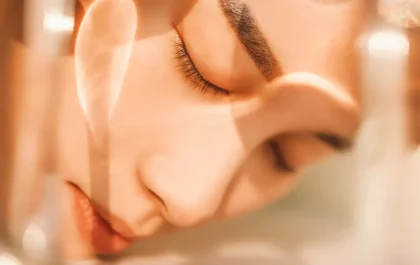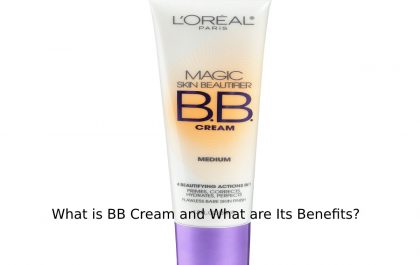Table of Contents
Hair Dressing – Introducing – Style your Hairs
Hair Dressing is a method of cutting, combing, or styling the hair to have a new look. Haircuts may include steps, layers, bobs, bangs, blunt cuts, flicks, quick haircuts, etc. Hairstyles include clouds, braids, buns, and considerably more.
A hairstylist’s job is to improve the client’s appearance with their work. Hairdressing types us look self-assured and speak a lot about our personality. Its deviations from our entrance make us the best version of ourselves if done neatly. Hairstyles vary as per the occasion. For example, a bun in the office, puff looks terrific at weddings, and braids look great at parties. Hairstylists require a lot of tolerance and decent declaration skills.
The hairdressing course in Chandigarh offers various methods for beginners and experts in Mousse and Hair Designing systems. The hairdressing business can make a lot of money as stylists can grow numerous chances by opening their salons, going to wedding stations, or even visiting their homes. Most hairdressers are workwise licensed as a cosmetologist, hairdressers, or barbers.
Hairdressers perform the actual shampooing, cutting, and coloring of hair while hairstylists choose hair designs. Matrix is one of the most excellent well-known hair care and color industry brands. Trireme is a different American hair care product brand that supports and replaces vital nutrients in the hair. A soft hair spa can also make hair look well.
It is imperative to brush your hair earlier than your bath, condition them with upkeep, get a regular trim, be mindful of dangerous ingredients, eat a normal diet, and style more innovative, like using a twisting iron or straightener to make your hair look neat.
First Known Uses of Hair Dressing
The hair is doubling specialists at FUR – Scalp micro pigment is the only expert in Canada who offer the FUR technique. This revolutionary approach provides arresting consequences without hair removal.
The use of medical-grade tools and single-use arrows to safeguard the course is 100% safe
You’ll see the fanciful results right away. Then, after several weeks, the pigment will stabilize your skin, and your new look will become lasting.
Different from popular belief, revolving up the heat on your blow dryer doesn’t dry make your hair faster. Instead, the high heat causes even more damage to the hair fiber, says Aly Wilensky, a beauty blogger, and contributor for latest-hairstyles.com.
The perfect heat setting rests on your hair’s thickness, coarseness, and texture. Ideally, ensure the dryer’s air feels comfortable on the back of your hand. As for curling irons and flat fetters, William Yates, MD, a hair loss specialist in Chicago, suggests keeping the heat between 200- and 400 degrees Fahrenheit, dependent on the thickness of your hair. Here are other hair mythologies you still fall for.
Here are the important features of this Hair Loss Solution
Before action, the skillful will carefully outline the assignment of your future hairline. The technician will consider your face’s appearance to ensure that your new hairline complements your features and looks natural.
This is a crucial step: a too high hairline will only emphasize your hair loss, though a too low hairline will appear unnatural.
During treatment, the technician repeats follicles one by one with a specially considered asymmetrical needle and medical-grade ink. The hand arrives about 1 mm below the skin’s surface and imprints an unsolvable pigment, observable through the epidermis, with each application. The technician thus repeats, which produces the illusion of hair density. What’s more, the results are instant. The technician must keep several things courtesy, including counting
The incorrectly round shape of natural hair glands
A Proven Hair Replication Technique – Hair Dressing
The avant-garde FUR – Scalp micro pigment method is done in a professional, remote clinic and involves a qualified technician. This process of follicle artificial requires special training and advanced knowledge as both a science and an art.
While the exact supplies and preparation limitations vary by the laws in the state where a person chooses to work, cosmetologists must complete an instructive program that requires at least nine months of full-time study.
Cosmetologists can perform a wide array of beauty services, including cutting, styling, and chemical services on the hair and non-hair services such as manicures, facials, and makeup. On the extra hand, barbers typically have a shorter training course and are primarily trained to perform hair care services. Finally, natural hair braiders may have the most limited scope of practice, as they are mainly taught in hair braiding and are thus typically not licensed to cut or color hair.
FUR – Scalp micro pigmentation: an answer to male pattern baldness. To see if micro scalp coloring is right for you, connect with the experts at FUR – Scalp micro pigment today by calling us at 514-666-1387 or texting us at 514-770-5874. In doing so, you’ll have involved the first stage of a new life.
The Different Types of Hairdressing
Hairdressing educations vary among dominions and the types of hair facilities that the hairdresser wishes to offer. In addition, a person must license by a government agency before cutting, coloring, or styling hair jobwise in many places.
A hairdresser demonstrates capability in certain areas of hair care, coloring, or styling and receives recognition from a trade association or industry vendor. This licensure procedure usually requires the aspiring stylist to complete an educational program, an apprenticeship, or a mixture of the two. Other types of hairdressing qualifications include expert certifications.
Conclusion
Some professional relations for hairdressers and builders of hair care equipment and products sponsor certification programs. These programs award permits to hairdressers who have achieved specific skills or skills in using proprietary equipment and harvests. While these hairdressing qualifications typically do not move a hairdresser’s licensing status, a hairdresser can include them on their resume or prospectus vitae as professional successes.
Related posts
Featured Posts
Shielding Your Skin: Understanding the Impact of Electronic Device-Generated Light (EDGL)
In today’s fast-paced world, electronic devices have become integral to our daily lives. From smartphones to laptops, we are constantly…
What is BB Cream and What are Its Benefits?
BB Cream and Its Benefits BB Cream to have you heard anything about the new competition to the traditional bases? …




